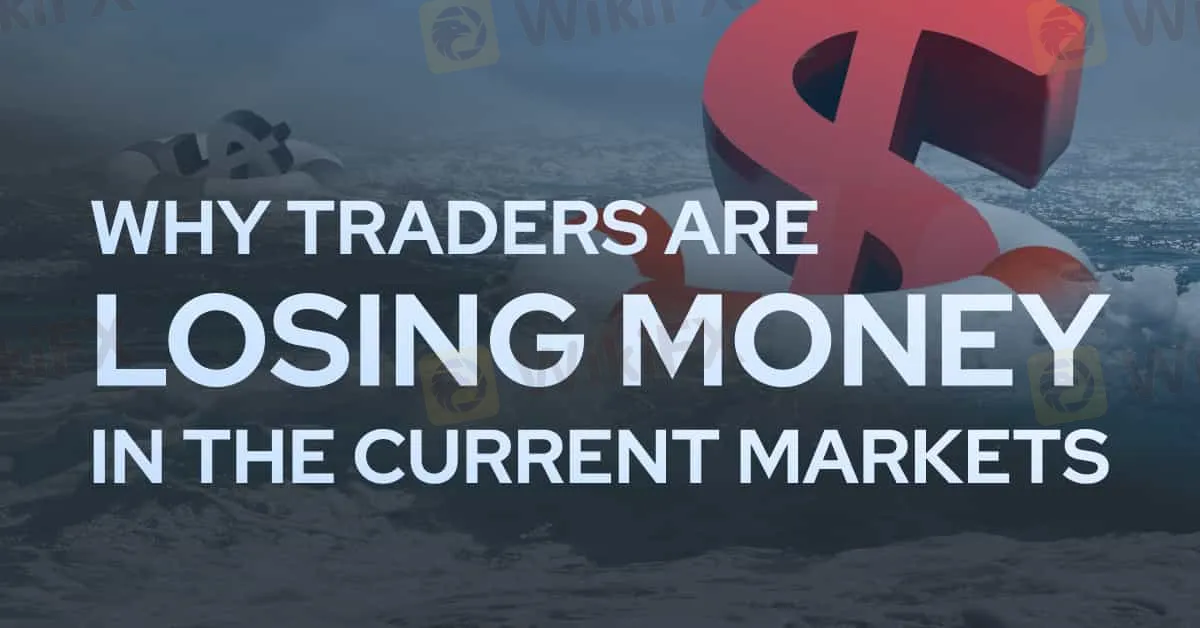简体中文
繁體中文
English
Pусский
日本語
ภาษาไทย
Tiếng Việt
Bahasa Indonesia
Español
हिन्दी
Filippiiniläinen
Français
Deutsch
Português
Türkçe
한국어
العربية
WHY TRADERS ARE LOSING MONEY IN THE CURRENT MARKETS
Abstract:Similar to stock traders who purchase and sell various stocks, foreign exchange, or forex, traders bet on shifting exchange rates by exchanging substantial sums of money from one currency to another. In essence, forex traders try to buy low and sell high in order to make money, but the asset they are trading is currency.

Similar to stock traders who purchase and sell various stocks, foreign exchange, or forex, traders bet on shifting exchange rates by exchanging substantial sums of money from one currency to another. In essence, forex traders try to buy low and sell high in order to make money, but the asset they are trading is currency.
Simply said, one can swap currencies thanks to the global financial market.
You could earn if your prediction that one currency will be stronger than the other turns out to be accurate.
Before there was a global pandemic, people could actually board airplanes and travel across borders.
If you've ever gone to another nation, you've probably had to locate a currency exchange station at the airport and convert your cash from your wallet into the local currency.
We buy when the stock market shows strength. When we see weakness, we sell. Both events incur losses. What is happening? In this article, we'll look at market behavior and how market patterns affect traders. If we can just keep a positive attitude, we'll be able to recognize market trends and generate income. something article will demonstrate how oversimplifying something is.
I focused on the SPY and Standard & Poors 500 Index equities trading above their 5- and 20-day moving averages while reviewing the last three years' worth of daily data. I segmented the data set into quartiles and specifically looked at what transpires after periods (top quartile) and (bottom quartile) breadth.
The following five days in SPY averaged a loss of -.14% when stocks trading above their five-day moving averages was in the top quartile (around 74+%). Keep in mind that a time when SPY increased by about 30% and the average daily return was +.20%. The following five days in SPY averaged a gain of +.57% when stocks trading above their five-day moving averages was in the bottom quartile (about less than 33%). In other words, regardless of attitude, trading after a five-day period cost a trader money. It is the scariest time to enter the market to buy equities, but doing so after five days of downturn was quite beneficial and more.
Examining average returns after 20 days of strength and weakness will now be done. The next 20 days in SPY losses of roughly -.31% on average when 20-day returns have been greatest (nearly 73% of equities trading above their 20-day moving averages).
This time period was +.79%. In contrast, the following 20 of +1.85% when 20-day returns are in their worst quartile (less than 37% of stocks are trading above their 20-day moving averages). Trading in losses for traders, while trading weakness produced better returns.
In other words, when on trend and momentum, traders tend to lose money because both great and weak returns will persist in the future. Stocks exhibit cyclical behavior. Markets typically exhibit momentum and trend when longer-term cycles are in control. In the short term, any reversal tendencies are outweighed by the upswing or downswing of a longer-term cycle. (Note how this makes it possible to predict market movement based on the interaction of various cycles. The market frequently disappoints traders' expectations. Humans have a tendency to extrapolate the future based on the past. This will eventually lead to a trader losing money, regardless of their psychology. Trendlines drawn and followed, breakouts taken, and waiting for “price confirmation” to enter market moves all result in losses over time. Our psychology is not the only factor undermining our trade. These are our presumptions.

Disclaimer:
The views in this article only represent the author's personal views, and do not constitute investment advice on this platform. This platform does not guarantee the accuracy, completeness and timeliness of the information in the article, and will not be liable for any loss caused by the use of or reliance on the information in the article.
Read more

USD/INR, USD/PHP Forecast April 2025
The global forex markets are bracing for April 2025 with divergent forecasts for key emerging market pairs. In particular, the USD/INR and USD/PHP pairs have attracted significant attention amid a mix of central bank interventions, evolving U.S. policy signals, and regional economic shifts. In this article, we review multiple forecasts, examine the driving factors, and outline what traders might expect as the month unfolds.

April Forex Trends: EUR/USD, GBP/USD, USD/JPY, AUD/USD, USD/CAD Insights
Know April’s forex seasonality trends for EUR/USD, GBP/USD, USD/JPY, AUD/USD, and USD/CAD. Historical insights and key levels to watch in 2025.

Should You Beware of Forex Trading Gurus?
Know the reality behind forex trading gurus, examining their deceptive tactics, inflated promises, and the risks associated with trusting them for financial advice.

Webull Launches SMSF Investment Platform with Zero Fees
Webull introduces commission-free SMSF trading, offering over 3,500 US and Australian ETFs, with no brokerage fees and enhanced portfolio tools.
WikiFX Broker
Latest News
Exposing the Top 5 Scam Brokers of March 2025: A Closer Look by WikiFX
Gold Prices Climb Again – Have Investors Seized the Opportunity?
Webull Launches SMSF Investment Platform with Zero Fees
Australian Regulator Warns of Money Laundering and Fraud Risks in Crypto ATMs
The Withdrawal Trap: How Scam Brokers Lure Victims into Paying More
FCA to Investors: Think Twice Before Trusting These Brokers
Trump\s tariffs: How could they affect the UK and your money
Trump gambles it all on global tariffs he\s wanted for decades
HTFX Spreads Joy During Eid Charity Event in Jakarta
How Will the Market React at a Crucial Turning Point?
Currency Calculator







